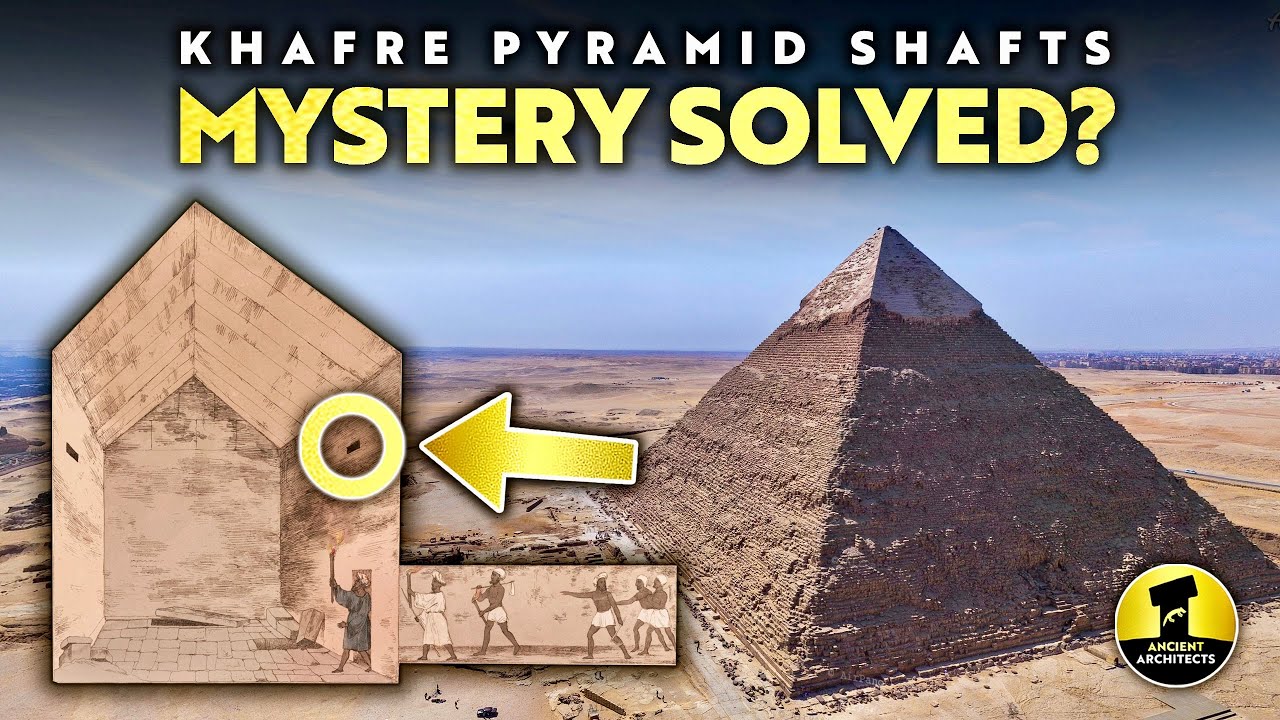Solving the Mystery of the Khafre Pyramid Shafts

Solving the Mystery of the Khafre Pyramid Shafts
The Pyramid of Khafre, located on the Giza Plateau, is the second-largest pyramid in Egypt. Although slightly shorter than the Great Pyramid, its elevated location often creates the illusion that it is taller. With its central position on the plateau and the iconic framing of the Sphinx’s head from certain angles, it is frequently mistaken for its “big brother.”
Khafre’s pyramid is remarkable, particularly with its top section still retaining fine Tura limestone casing. However, its exposed core masonry below the casing is more dilapidated compared to the Great Pyramid’s tidy, step-like appearance.
While the Great Pyramid is celebrated for its intricate internal layout, including chambers and passageways like the Grand Gallery and King’s Chamber, Khafre’s pyramid is simpler in design.
The burial chamber of the Khafre Pyramid is entirely carved into the Giza bedrock, unlike the stacked masonry found in other pyramids. Despite its simplicity, the chamber holds intriguing features, such as two square holes in its northern and southern walls.
These features, often compared to the “air shafts” in the Great Pyramid’s King’s and Queen’s Chambers, have sparked debate about their function.

Unlike the Great Pyramid’s shafts, which extend fully through the structure and are considered part of its original architectural plan, the Khafre pyramid’s holes are shallow—measuring just 29 cm and 34 cm deep—and appear unfinished. According to archaeologist Flinders Petrie, these holes were irregular and may have been part of an abandoned design rather than functional air shafts.
Red construction lines and markings in the burial chamber suggest an alternative explanation. Keith Hamilton, in his research, proposes that these holes may have been intended to support wooden beams for a partition, dividing the chamber into two sections: an antechamber and the main burial chamber. However, this design was likely never completed.
Historical evidence shows that the Khafre Pyramid has undergone significant changes over the centuries. Explorers like Giovanni Belzoni and John Perring documented modifications and damage to the burial chamber, including the removal of a fine limestone pavement and discoveries of hieroglyphic markings.
These alterations, along with ancient looting and later renovations, have significantly altered the pyramid’s original state.
Although the Khafre Pyramid is overshadowed by the Great Pyramid, it remains an architectural marvel with many mysteries yet to be solved. From unfinished shafts to evidence of later modifications, its story is a testament to the layered history of Egypt’s ancient monuments.
For more insights into the mysteries of the Khafre Pyramid and the Giza Plateau, subscribe to the Ancient Architects channel.








